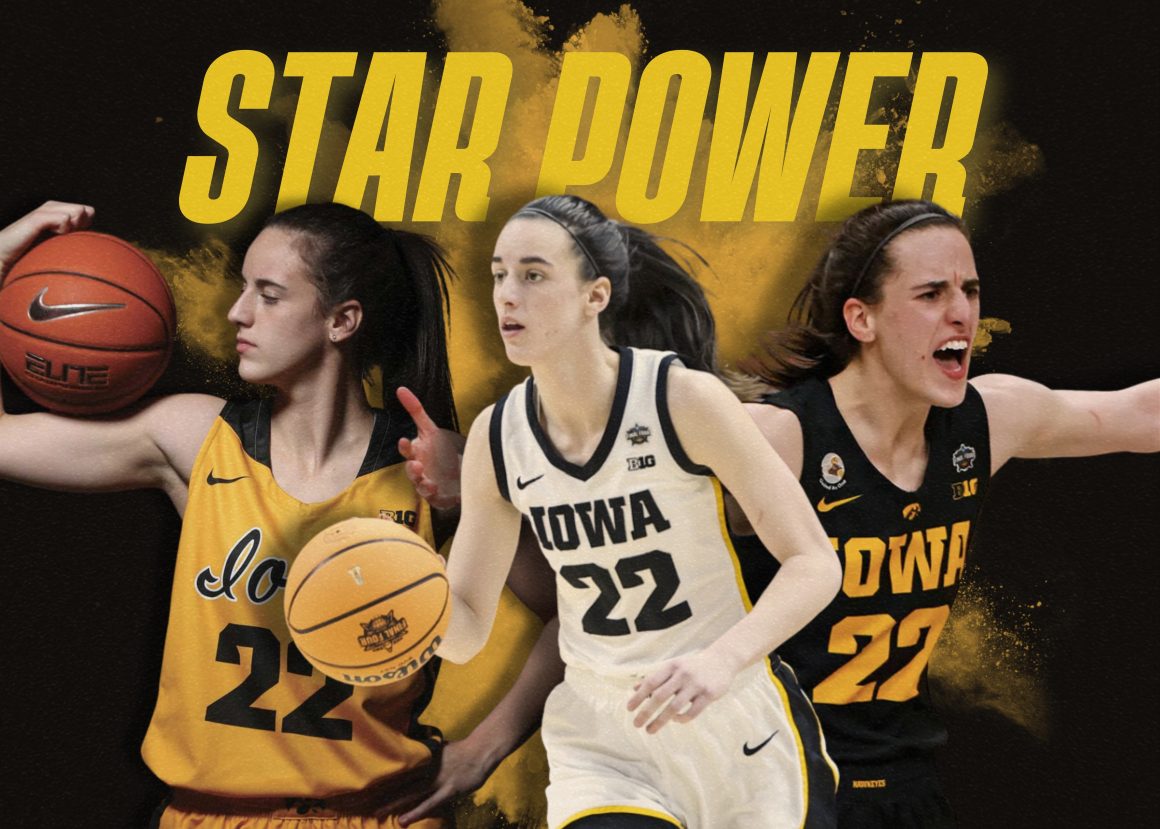
The changing face of women’s college basketball
By Nicol Garzon, April 20 2024—
The National Collegiate Athletic Association’s (NCAA) March Madness is a highlight of the American spring. The yearly Division-I college basketball tournament features 68 teams from across the United States competing in a single-elimination format to determine the national champion. March Madness is renowned for its unpredictability, dramatic upsets and thrilling games, making it a highly anticipated and widely watched sporting event in the United States.
Traditionally associated with men’s teams, recent years have witnessed a notable shift in focus towards the women’s championship in basketball. With standout athletes such as Caitlin Clark and Juju Watkins, interest has surged significantly, capturing the attention of fans who are now closely following the women’s games. Notably, basketball icon and current Inside the NBA sports analyst, Shaquille O’Neal, has publicly declared his exclusive viewership of the women’s tournament this year, praising the competitiveness and quality of play shown by female athletes. This sentiment resonates widely, as evidenced by the increased ratings, with an average of over 400 thousand viewers tuning in per game during the regular season.
But why?
The recent surge of interest in women’s college basketball is no stroke of luck; it’s the culmination of various factors driving its momentum. The emergence of standout female athletes has been particularly noteworthy, with the Caitlin Clark effect capturing global attention. Since joining the Iowa Hawkeyes, she led an undervalued squad to the 2022–2023 final, an unexpected achievement. Ultimately, the team was defeated by Angel Reese’s Louisiana State University Tigers (LSU). Nevertheless, fans were captivated by the astounding quality of the star players. Since then, the excitement has followed Clark. Dubbed Ponytail Pete after Pete Maravich, the former all-time leading scorer in NCAA Division I basketball, Clark recently surpassed him to claim the title herself.
Recognizing her star power, Clark has capitalized on the NCAA’s recently implemented Name, Image, and Likeness (NIL) guidelines. Introduced in 2021, NIL allows college athletes to monetize their image, a previously unavailable opportunity. Consequently, college athletes like Clark have attained heightened levels of visibility and secured lucrative endorsement deals with major brands such as Gatorade and State Farm, among others. Through these avenues, it appears that female college athletes are achieving household recognition for perhaps the first time in history.
What does this mean for women’s basketball?
For any sports enthusiast, the growing excitement for women’s collegiate basketball is exhilarating, yet it begs the question of its sustainability. As Clark announced her intention to enter the WNBA draft, there was the question of whether the momentum would carry forward. The anticipation surrounding her endorsements and potential funding presents an opportunity for the league to move closer to parity with its male counterpart. It might be premature to predict the full extent of Clark’s impact on the league’s trajectory, placing such monumental expectations on a singular player could be overwhelming and unrealistic. Only time will provide a clearer picture, revealing the true implication of her transition to the professional ranks and its effects on the broader landscape of women’s basketball. Nevertheless, it’s undeniable that her influence is already keenly felt.
What about Canada?
It’s evident that university-level sports in Canada don’t measure up to the levels seen in the United States. American colleges continue to be the premier destination for sports, with elite athletes often opting to attend American post-secondary institutions rather than trying their hand in the Canadian U SPORTS League. This preference can be attributed to the incomparable financial support received by the NCAA, which in turn results in opportunities such as full-ride sports scholarships, which are non-existent in Canadian universities as of 2024, as well as the potential brand deals now available since the update to NIL guidelines. Consequently, it’s understandable why many of our top athletes choose to pursue their university sports careers south of the border.
Nonetheless, since its rebranding in 2016, U SPORTS is making strides and providing avenues for development for our homegrown athletes. Recently, it was announced that there would be significant policy changes to Athletic Financial Awards (AFA) for the 2024–2025 season, allowing first-time entering student-athletes to participate and receive scholarships based on university acceptance and enrollment, aiming to remove systemic barriers and ensuring equitable distribution of AFA units between men’s and women’s teams. Despite the discrepancies between opportunities in the NCAA and U SPORTS, our country has created quality players who significantly contribute to sports, and Canada isn’t short of emerging stars in women’s basketball. Namely, you can catch Calgary’s very own Yvonne Ejim shining in this year’s March Madness as a pivotal player for the Gonzaga Bulldogs.
